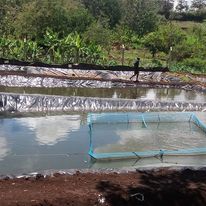Introduction
Geomembrane liners have become an essential component in a variety of industries due to their effectiveness in containment applications. From waste management to agriculture, these liners offer a durable and impermeable solution for protecting the environment. This guide provides an in-depth overview of geomembrane liners, their types, applications, and benefits.
What Are Geomembrane Liners?
Geomembrane liners are impermeable membranes used primarily for lining and waterproofing purposes. They are made from synthetic polymers, offering robust and long-lasting containment solutions. The primary function of these liners is to prevent the migration of fluids (liquids or gases) into or out of a containment area.
Types of Geomembrane Liners
There are several types of geomembrane liners, each suited to different applications and environments:
- High-Density Polyethylene (HDPE)
- Advantages: High chemical resistance, UV resistance, and durability.
- Applications: Landfill liners, mining, and aquaculture.
- Low-Density Polyethylene (LDPE)
- Advantages: Flexibility, ease of installation, and cost-effectiveness.
- Applications: Pond liners, irrigation canals, and decorative water features.
- Linear Low-Density Polyethylene (LLDPE)
- Advantages: Superior flexibility and elongation properties.
- Applications: Waste containment, canal linings, and hazardous liquid containment.
- Polyvinyl Chloride (PVC)
- Advantages: Flexibility, ease of seaming, and good puncture resistance.
- Applications: Water reservoirs, sewage treatment plants, and decorative ponds.
- Ethylene Propylene Diene Monomer (EPDM)
- Advantages: Excellent weatherability, flexibility, and UV resistance.
- Applications: Roofing membranes, pond liners, and decorative water features.
Applications of Geomembrane Liners
Geomembrane liners are versatile and used in various industries:
- Waste Management
- Usage: Landfills and waste containment sites.
- Purpose: To prevent leachate from contaminating the surrounding soil and groundwater.
- Example: The EPA’s guidelines on landfill liners and covers emphasize the importance of using high-quality geomembranes EPA.gov.
- Mining
- Usage: Heap leach pads, tailings dams, and process ponds.
- Purpose: To contain hazardous chemicals and prevent environmental contamination.
- Example: A study on mining containment solutions highlights the role of geomembrane liners in preventing leaks ResearchGate.
- Agriculture
- Usage: Irrigation canals, reservoirs, and agricultural ponds.
- Purpose: To reduce water loss and improve water management efficiency.
- Example: The use of geomembranes in agricultural applications has been documented to enhance irrigation efficiency SpringerLink.
- Water Management
- Usage: Reservoirs, canals, and water treatment facilities.
- Purpose: To prevent seepage and contamination of water supplies.
- Example: Case studies on the use of geomembranes in water management showcase their effectiveness in maintaining water quality Wiley Online Library.
- Construction
- Usage: Waterproofing of foundations, tunnels, and roofs.
- Purpose: To prevent water ingress and ensure structural integrity.
- Example: The application of geomembrane liners in construction projects has been explored in various engineering journals ASCE Library.
Benefits of Geomembrane Liners
- Durability: Geomembrane liners are designed to withstand harsh environmental conditions, providing long-term containment solutions.
- Chemical Resistance: These liners can resist a wide range of chemicals, making them suitable for hazardous waste containment.
- Flexibility: Certain types of geomembranes, such as LLDPE and EPDM, offer excellent flexibility, making them easy to install in various configurations.
- Cost-Effectiveness: Despite their robust performance, geomembrane liners are cost-effective, offering a lower total cost of ownership compared to traditional lining materials.
- Environmental Protection: By preventing leaks and contamination, geomembrane liners play a crucial role in protecting the environment.
Conclusion
Geomembrane liners are a critical component in modern containment solutions across various industries. Their versatility, durability, and environmental benefits make them an indispensable tool for protecting natural resources and ensuring the safe containment of hazardous materials. For more detailed information on specific applications and technical specifications, consider visiting industry-specific resources or consulting with a geomembrane liner manufacturer.
Further Reading
- EPA Guidelines on Landfill Liners
- Study on Mining Containment Solutions
- Agricultural Applications of Geomembranes
- Water Management Case Studies
- Geomembranes in Construction
By understanding the various types, applications, and benefits of geomembrane liners, industry professionals can make informed decisions to enhance their containment strategies and environmental protection efforts.
Originally posted 2024-08-02 11:16:26.

